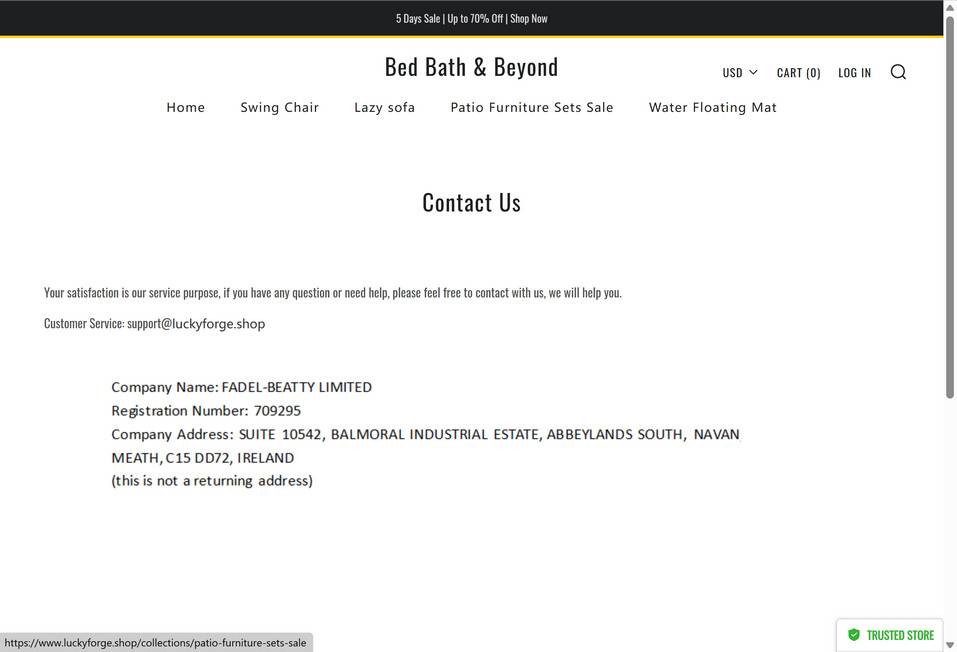If you are a fan of Bed Bath and Beyond, you may be tempted by the offers of clearance sales that appear online. However, you should be careful not to fall for the Bed Bath and Beyond Closing Sale scam, which is a scheme that uses the name and logo of the popular retailer to trick people into giving away their money and personal information. In this blog post, we will explain what the Bed Bath and Beyond Closing Sale scam is, how it works, and what you can do if you have fallen victim to it.


This Article Contains:
What is the Bed Bath and Beyond Closing Sale Scam?
The Bed Bath and Beyond Closing Sale scam is a type of online fraud that targets customers of the well-known home goods store. The scam involves websites that look like the official Bed Bath and Beyond site, but are actually fake and designed to steal your information. These sites may offer discounts of up to 80% on various items, such as bedding, towels, kitchenware, and more. They may also claim that the sale is for a limited time only, or that the stock is running low, to create a sense of urgency and pressure you to buy.
How The Bed Bath and Beyond Closing Sale Scam Works?
The Bed Bath and Beyond Closing Sale scam works by luring you with attractive offers that seem too good to be true. You may receive an email, a text message, a social media post, or an online ad that directs you to one of these fake sites. Once you click on the link, you will be taken to a website that looks very similar to the real Bed Bath and Beyond site, with the same logo, colors, and layout. However, if you look closely, you may notice some signs that the site is not legitimate, such as:
- The domain name is different from the official one (www.bedbathandbeyond.com). It may have extra words or letters, such as www.bedbathandbeyond-clearance.com or www.bedbathandbeyond.shop.
- The site has poor grammar, spelling, or punctuation errors.
- The site does not have a secure connection (https) or a padlock icon in the address bar.
- The site asks for too much personal information, such as your social security number, bank account number, or driver’s license number.
- The site does not have a clear return policy, customer service contact, or privacy policy.
If you decide to buy something from one of these fake sites, you will be asked to enter your credit card information and other details. However, instead of receiving your order confirmation and tracking number, you will receive nothing at all. The scammers will use your information to make unauthorized charges on your card, or sell it to other criminals who may use it for identity theft.
What To Do If You Have Fallen Victim?
If you have fallen victim to the Bed Bath and Beyond Closing Sale scam, you should take the following steps as soon as possible:
- Contact your bank or credit card company and report the fraudulent transaction. Ask them to cancel your card and issue a new one.
- Change your passwords and security questions for any online accounts that may have been compromised.
- Monitor your credit reports and bank statements for any suspicious activity.
- Report the scam to the Federal Trade Commission (FTC) at www.ftc.gov/complaint.
- Report the scam to Bed Bath and Beyond at www.bedbathandbeyond.com/store/static/customerservice.
Conclusion
The Bed Bath and Beyond Closing Sale scam is a serious threat that can cost you money and damage your credit. To avoid falling for this scam, always be wary of any offers that seem too good to be true, and always check the authenticity of any website before making a purchase. Remember that Bed Bath and Beyond will never send you unsolicited emails or texts with links to their clearance sales. If you have any doubts about an offer or a website, contact Bed Bath and Beyond directly at 1-800-GO-BEYOND (1-800-462-3966) or visit their official website at www.bedbathandbeyond.com.










